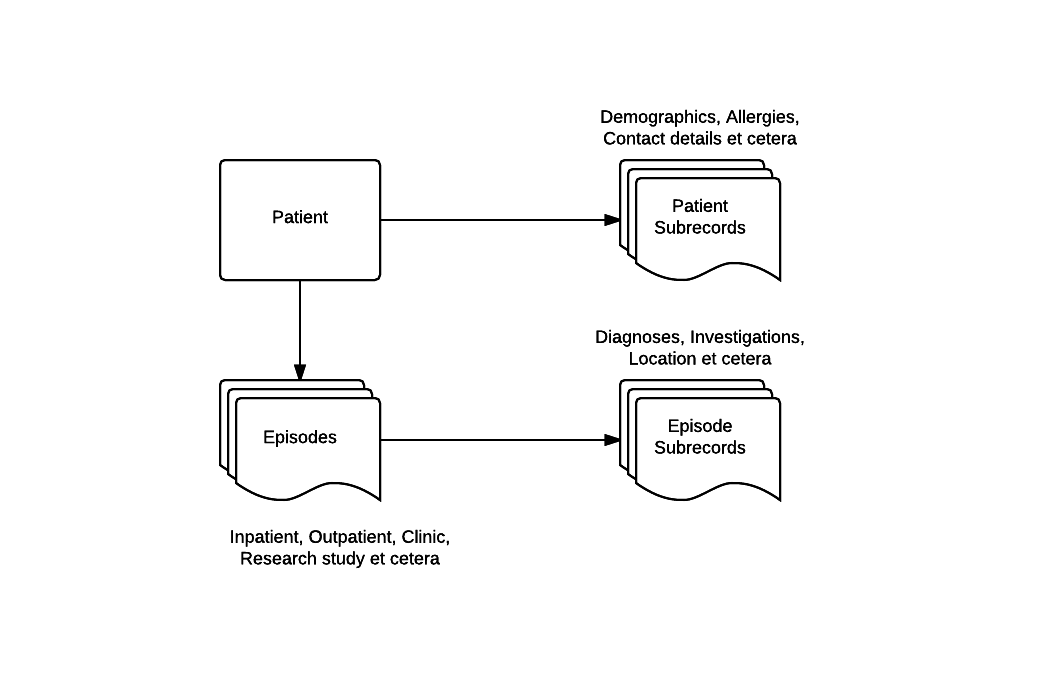The Opal Data model
The Opal data model allows for patients to have multiple sequential or concurrent
Episodes of care. Some information is linked to an Episode, some is linked to
a Patient.

Patients
A Patient may have many Episodes. An Episode is something like an Inpatient admission,
a telephone liaison, care under an outpatient clinic, an appointment at a drop in clinic.
Applications or plugins may define their own Episode categories, and a common pattern is to
alter the display or available functionality by episode type. (e.g. You may associate
templates for discharge summaries with particular episode types)
A Patient will have Subrecords (such as e.g. Demographics) which follow them across multiple
episodes. These are information linked to a particular person, and should be implemented as
Django models that inherit from the opal.models.PatientSubrecord base class.
Episodes
An Episode is linked to a Patient, and will contain some metadata about the type and date
of the episode. The field Episode.category_name stores a string representing the relevant
EpisodeCategory e.g. ('Inpatient', 'Outpatient', ...), while a category object is returned
from the episode.category field. The start and end dates of an Episode may be retrieved
from the start and end properties.
An Episode will have Subrecords (such as e.g. Diagnosis) which are linked to this episode of
care. These should be implemented as Django models that inherit from the opal.models.EpisodeSubRecord
base class.
Records
A Subrecord consists of a collection of fields that constitute a record. For example, one could
implement a Demograpics Subrecord as follows:
class Demographics(PatientSubrecord):
name = models.CharField(max_length=255, blank=True)
hospital_number = models.CharField(max_length=255, blank=True)
date_of_birth = models.DateField(null=True, blank=True)
ethnicity = models.CharField(max_length=255, blank=True,
null=True)
gender = models.CharField(max_length=255, blank=True,
null=True)
Subrecords also define various properties that will provide metadata about their display or structure, which are documented in the Subrecord reference material
Core Clinical Data Model
Opal ships with a wide range of core clinical concepts implemented as Abstract Subrecords.
Applications that are generated via the $ opal startproject command will automatically
contain concrete implementations of these models in the application.
Full documentation of these models is available in the Archetypes documentation.
Reference Data
Opal comes with a set of clinical terminology data models out of the box. - we often want to link our records to one of these - for example to record a type of condition a patient might have, or a drug they are taking.
Full documentation of these is available in the Lookup lists documentation.